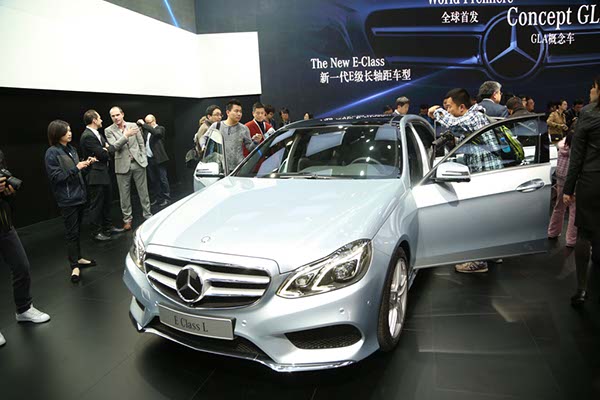Hebei capital restricts autos
Updated: 2013-07-08 07:42
 Cars crowd a highway in Beijing. Shijiazhuang plans to follow the capital's lead by restricting vehicle purchases. [Wu Changqing / For China Daily] |
Air concerns likely to prompt more to adopt same policy
Following the lead of Beijing, Shanghai, Guangzhou and Guiyang, a city near Beijing will become the fifth in China to restrict the purchase of vehicles for private use.
As part of a batch of new policies aimed at addressing diminishing standards of air quality, the city government of Shijiazhuang, capital of Hebei province, announced on June 18 that it will restrict families from buying a third car starting at the end of this year.
Furthermore, the city will restrict the use of vehicles to odd or even-numbered dates based on the last number of license plates.
The local government vowed to prevent the number of cars on the road from exceeding 1.9 million in 2013 and to keep that number within 2.1 million units by the end of 2015.
The plan only allows for a 200,000-unit increase annually, and the total is to exceed no more than 2.3 million vehicles by the end of 2017.
The city will also start holding a lottery for license plates starting in 2015, according to the plan.
This move is likely to lead to substantial growth in vehicle sales citywide for the rest of the year, with second-half sales more than doubling the figure of the first six months, said Zhang Yu, director of AutoForesight (Shanghai) Co Ltd.
But he added that in the long term, it will have negative effects on the local market.
"Domestic brands will be severely hit, while the medium and high-class segments will hardly see any impact," Zhang predicted.
With more and more cars on the road, much stress is being put on the nation's environment and transportation infrastructure, which is pushing many cities to adopt similar policies, Zhang said.
More cities to follow?
Analysts expect that Hangzhou, the provincial capital of Zhejiang, will be the next to restrict licenses, though the local government was not available for comment at press time.
Media reports have also speculated that large cities like Xi'an, Wuhan and Chengdu are also likely to release similar regulations.
According to a notice on the official website of the Xi'an city government, in August 2012, the city planned to hold a public hearing about restricting vehicles.
But in the year that has passed since, the government has announced no plans yet to implement such measures.
Zhang said, in his opinion, these policies have a limited impact on improving air conditions and easing traffic pressure.
Improving fuel quality and developing public transportation would do more to solve the problem, Zhang said.
He said that the sulfide content of China's fuel is more than 100 times higher than that of Europe, while subway networks - even in metropolitan cities like Beijing and Shanghai - are inadequate compared to some cities in developed countries.
Nanfang Daily, a renowned newspaper in Guangdong, recently cited experts who said that if five or six large or medium-sized cities adopt vehicle restrictions in a year, the growth rate of passenger vehicle sales will decrease 3 percentage points annually.
The paper reported that this would deal a major blow to the market.
"Once several provincial capitals and major cities carry out vehicle restrictions consecutively, the country's entire auto market environment will soon change, and vehicle sales will have obvious fluctuations in the short term,"noted Su Hui, an auto analyst. Unlike Zhang, Su said even the luxury segment will be affected by the restrictions.
And he added that the luxury market will be further affected by new policies on official vehicle procurement that favor domestic brands. According to China Passenger Car Association, passenger vehicle sales including minivans totaled nearly 8.2 million units in the first half of this year, a year-on-year increase of 16.7 percent.









